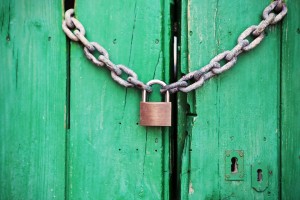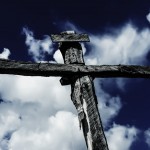To what are you addicted? What is it that holds you down, as if a prisoner?
Which are the chains that bind you?
You don’t have to say it out loud. No one need hear you.
You can even deny that anyone ever posed the question.
I won’t say anything.
But come clean. Right now.
After all, it’s just you, alone, reading some words on a screen, right?
Is it pornography? Alcohol? Gambling? Anger? Money? Junk television? Your knee-jerk reaction to those little things which constantly tick you off – every . . . single . . . time?
Look, we all struggle with some form of addiction.
For some, it’s a defining characteristic. For others, our addictions hold us back from being – becoming, really – our better selves.
We are all, to one degree or another, chained.
Matt Talbot (1856-1925) was someone who knew a lot about the chains of addiction. He had become a “hopeless alcoholic” by age thirteen. Savior.org gives us a quick background:
Matthew Talbot was born on May 2, 1856, the second of 12 siblings, in Dublin, Ireland. He had three sisters and nine brothers, three of whom died young. His father Charles was a dockworker and his mother, Elizabeth, was a housewife. When Matthew was about 12 years old, he started to drink alcohol. His father was a known alcoholic as well as all his brothers. The eldest brother, John, was the exception. Charles tried to dissuade Matthew with severe punishments but without success.
An unskilled laborer, Talbot struggled, until age 28, not only with drink, but with a fierce temper and criminal behavior that fed into his addiction.
Then things changed.
Suddenly.
And for the next forty years, Talbot was a new man.
Eventually, Talbot became a Third Order Franciscan, spent many hours in prayer, and lived the life of an ascetic. He’s even on the road to sainthood.
But here’s my point.
Talbot was never actually freed from his chains.
No.
But he did, literally, exchange them.
You see, it was revealed upon his death that for some period of time after his conversion, Talbot had worn physical chains around his body. Why?
The chains . . . were not some extreme penitential regime but a symbol of his devotion to Mary, Mother of God that he wished to give himself to her totally as a slave. This life was his prayer to God and his defense against a reversion to alcoholism.
Freedom from addiction.
Freedom through – freedom because of – his chains.
Talbot had exchanged the chains of addiction for new ones: chains that he chose; chains which led him directly to freedom.
So permit me to ask once again:
Which are the chains that bind you?
I’ll leave you with two Talbot quotes. I hope that you’ll take some time to reflect upon them:
Never be too hard on the man who can’t give up drink. It’s as hard to give up the drink as it is to raise the dead to life again. But both are possible and even easy for Our Lord. We have only to depend on him.
And this:
Three things I cannot escape: the eye of God, the voice of conscience, the stroke of death. In company, guard your tongue. In your family, guard your temper. When alone guard your thoughts.
Good advice, all.
You can read more about Matt Talbot here and here. And you can watch short videos about his conversion story, his death, and more here.
May we all, like Talbot, find freedom within our chains.
Peace
Chain Image Credit: Pixabay.com
Talbot Image Credit: Wikimedia Commons, Public Domain

















